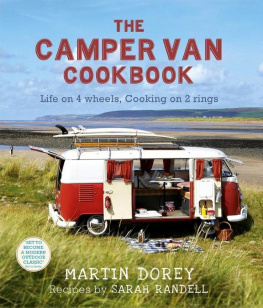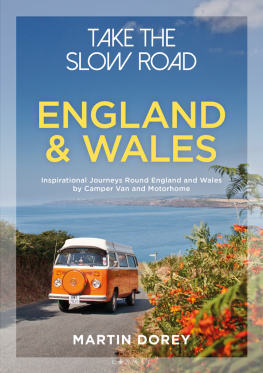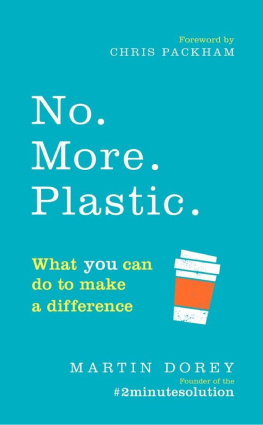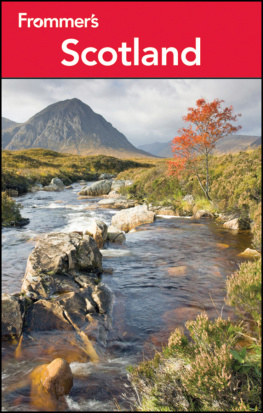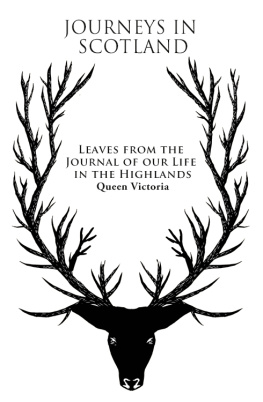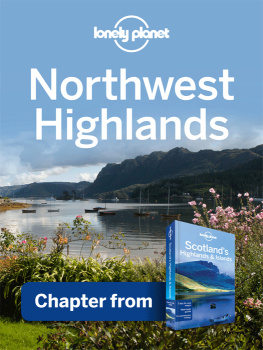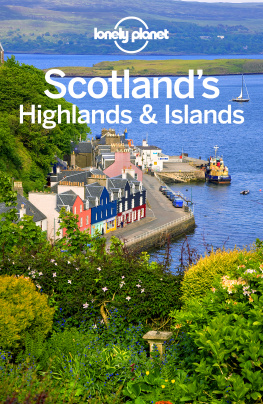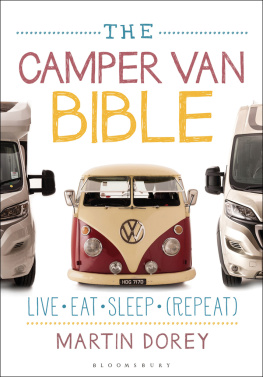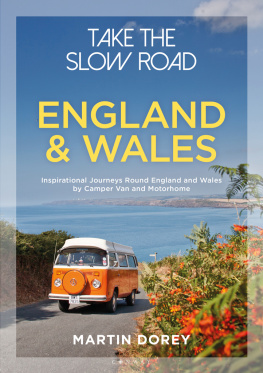DEDICATION
For the skinny-dipping, confectionery-conveying companions, the bored back-seat drivers and gear-grinding gypsies, the laughing layabouts and secret-sharing surfers, the hand-holding hobos and the natural navigators.
For friends and family.
For those who stick with it when things get tricky.
A sincere thank-you for being there.
CONTENTS
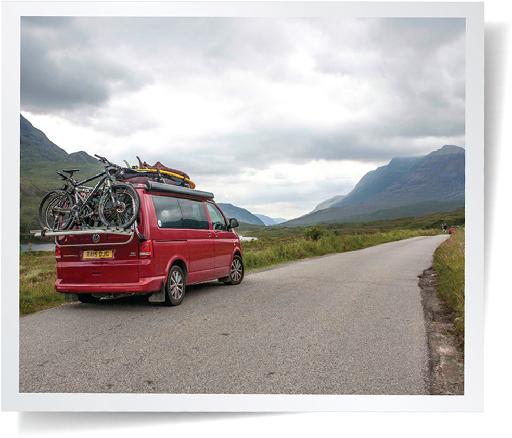



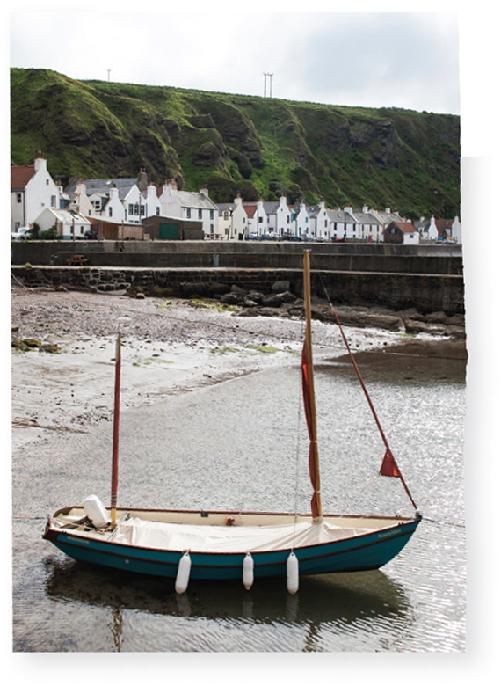
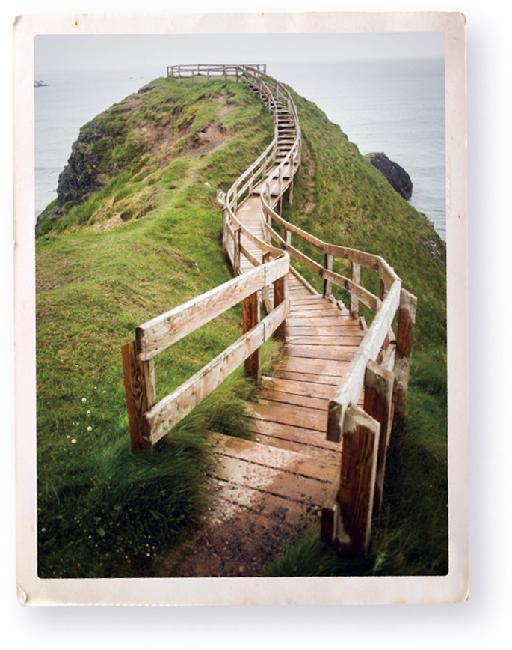
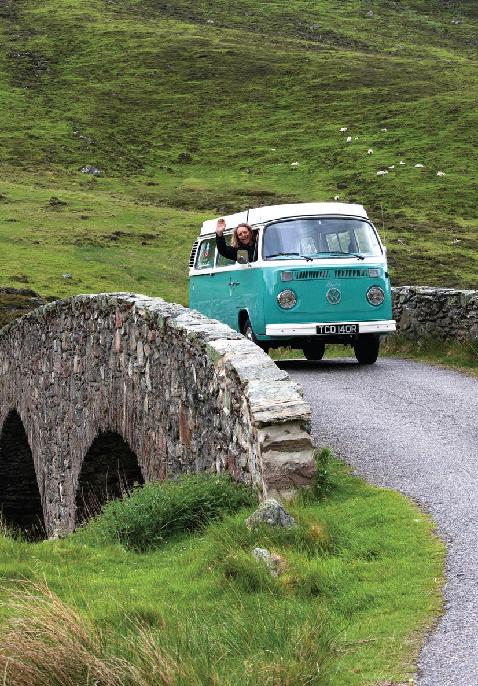
ABOUT THIS BOOK
Hello.
Welcome to the slow road.
Dont rush. There is plenty of time. We have a lot of long, light evenings ahead of us. There are sights to see and people to meet. There are smiles to be smiled.
If we do this right the slow road could be everything that you have been looking for.
The slow road is open spaces, nights under the stars, warm evenings skinny dipping on white-sand beaches, early mornings waking to wet grass outside the van, dark nights staying up to search the sky for the aurora, warming your hands on open fires, laughing with friends, taking time for the kids, having fun.
The slow road is getting from A to B but always via Z.
It is making idle meandering your sole purpose. It isnt lazy, far from it, because you have a reason to be dawdling. Taking the slow road is perfecting the gentle, lost art of wandering. Call it bumbling, bimbling, pootling, tootling, sauntering or drifting if you like, but the end is the same:
Life lived away from the TV and the couch.
Life lived with a smile on your face.
Life lived in harmony.
Life lived with love.
Now get in the van.

HOW TO USE THIS BOOK
Now, dont take this the wrong way, but I need to tell you a little about how to get the most out of this book. Thats because it has been written to work in two ways. First, I want you to be inspired enough from reading it in advance of your next adventure to rush to book your ferries, flights and motorhome and to hit the slow road. Second, I want you to be able to use this book while you are on the slow road. So its just at home on your coffee table as on your dashboard.
The book is divided into geographical areas, with a number of driving routes within each. Each route is then divided into a little bit of writing about my experiences while researching the route. These include snippets of things that happened along the way, things you shouldnt miss or things that I found special about the route. After that its The Driving, which is all about how the route works. Next are the listings of places to stay on the route, including information on official wild-camping spots, toilets and emptying points as well as nice campsites. After that its the listings of whats in the area. This can include castles, ancient sites, nice beaches or anything that caught my eye along the way. Finally, each section has a quick-look information box that tells you a little of the useful stuff youll need, such as which OS maps to buy, how long the route is, where to hire a motorhome nearby or how long the route is likely to take you.
All in all, Take the Slow Road has been designed to be the kind of book youll want hanging about to nag you a little each time you flick through it. It should speak to you in a mildly insistent voice that says Get out the diary. Book it now!
It has also been designed to give you lots of practical on-the-road advice, detailed directions and places to see while you are on your trip. Thats the bit for when youre on the slow road, getting ideas and looking for direction. The maps should help you to plan routes, join routes together and drive them, and the pictures, I hope, will have you reaching out for the keys, packing your bags and dashing out the door.
Scotland is an awesome country. And I mean that in the true meaning of the word.
Have fun!

INTRODUCING SCOTLAND
Welcome to Scotland.
If anywhere is perfect for a road trip it is Scotland. It has great distances, great views, great people and some of the greatest landscapes in the United Kingdom. Scotland also has the UKs deepest lake, the highest mountain and the oldest building. It has eagles, red squirrels, wild cats, pine martens and capercaillies. Whales, dolphins, otters and seals swim in its seas. Huge, beautiful Caledonian pines grow alongside its byways and on its mountainsides, while rare machair grasslands thrive above the tideline of its most beautiful west coast and island beaches.
Scotland also has roads. Thousands of miles of them. Many of them are spectacular in the extreme. With the exception of some of the major routes, every road I have driven in the writing of this book (and that is a lot of roads) has something special about it. Heck, even the M74 passes through some interesting scenery.
Scotland has Britains highest main road, highest classified road and the worlds longest triple tower cable-stayed bridge, the Queensferry Crossing. It is a country of superlatives, where you can be at the most north-westerly tip of Europe or at the UKs most remote pub.
For motorhomers and camper vanners Scotland is a brilliant place to travel. Generally there is a positive and tolerant attitude towards wild camping and parking up at beaches or in the countryside, even though the Land Reform (Scotland) Act 2003 (which allows wild camping in Scotland) and Scottish Outdoor Access Code do not make specific reference to sleeping in vehicles. So, the tolerance is down to an understanding that motorhomes and camper vans are good for business. It is our responsibility to make sure it stays that way. There is more about this .
The camping scene is doing well in Scotland, too. While it isnt overrun with campsites, there are plenty enough in which to get a shower, fill up the tanks and plug in for a few days if you need to. The Caravan and Motorhome Club has around 30 Club Sites with many more Certificated Sites.
In the Outer Hebrides, motorhomers are well catered for too, with showers and chemical-toilet emptying points available for you to use in leisure centres, in public toilets and at public buildings. I have done my best to list as many of them as I can in these sections.
If you are self-contained there is no limit to how wild you can go in Scotland. The population is concentrated largely on the central lowland belt and on the east coast around Inverness, Perth and Aberdeen. This leaves large tracts of the country with fewer than one person for every 10 hectares (2011 census). And if you have time and dont mind slow, winding, sometimes difficult roads, you will love it.
Next page

